
THE NEED TO CHANGE IS URGENT WE ARE ALL RESPONSIBLE FOR PLAN ASTRA
PLAN ASTRA WILL BE DIFFERENT FOR EVERYONE PLAN ASTRA WILL COMBINE THE CURRENT, THE NEW AND THE FUTURE







THE NEED TO CHANGE IS URGENT WE ARE ALL RESPONSIBLE FOR PLAN ASTRA
PLAN ASTRA WILL BE DIFFERENT FOR EVERYONE PLAN ASTRA WILL COMBINE THE CURRENT, THE NEW AND THE FUTURE






“As aviators, this Anzac Day, I invite you to consider your role in protecting the gift entrusted to us by those we gather to remember. In doing so, we commemorate their sacrifice through both remembrance and our commitment to defending their hard-won victories.”
As Anzac Day approaches, we prepare to pay our respects to those who returned from service with both physical and mental injuries and those who made the ultimate sacrifice defending everything we cherish today. Reflecting on the events at Gallipoli on April 25, 1915, we commemorate the lives of ANZAC forces, acknowledge their courage, and appreciate their commitment in service to our countries. The Gallipoli campaign, marked by the loss of 8700 Australians and 2779 New Zealanders, reminds us of the selflessness displayed by those who serve to defend our shared values.
Anzac Day recognises the service of all New Zealanders and Australians in conflicts worldwide. I recently visited the International Bomber Command Centre Memorial in Lincolnshire, England, where 1781 New Zealanders are among the countless individuals remembered. I was astonished by their immense bravery. Only one-third of Bomber Command aircrew saw the end of WWII without injury, death, or being taken prisoner. These volunteers fought in the skies of Europe to defend our freedoms. On Anzac Day, I will reflect on the privilege their service and bravery allows me and has given all of us.
In many ways, our world differs from the one known by those we gather to remember. Through their sacrifice, we have enjoyed a century of progress in the interests of humanity. It is crucial to recognise the significance of this progress. Today, diplomacy prevails over conflict as the status quo, our established human rights are safeguarded by democratic process, and we continue to strive for greater equality. As dawn breaks, we gather not only to remember what their sacrifices gave us but also to reflect on how precious and fragile that gift is.
As aviators, this Anzac Day, I invite you to consider your role in protecting the gift entrusted to us by those we gather to remember. In doing so, we commemorate their sacrifice through both remembrance and our commitment to defending their hard-won victories.
I will leave you with a quote from the few nameless marble panels in the Roll of Honour at the Auckland War Memorial Museum’s Hall of Memory. I hope that the words they felt needed to be written will resonate with you, as they did with me, as we work together to ensure a safe and secure New Zealand in these changing times.
Let these panels never be filled
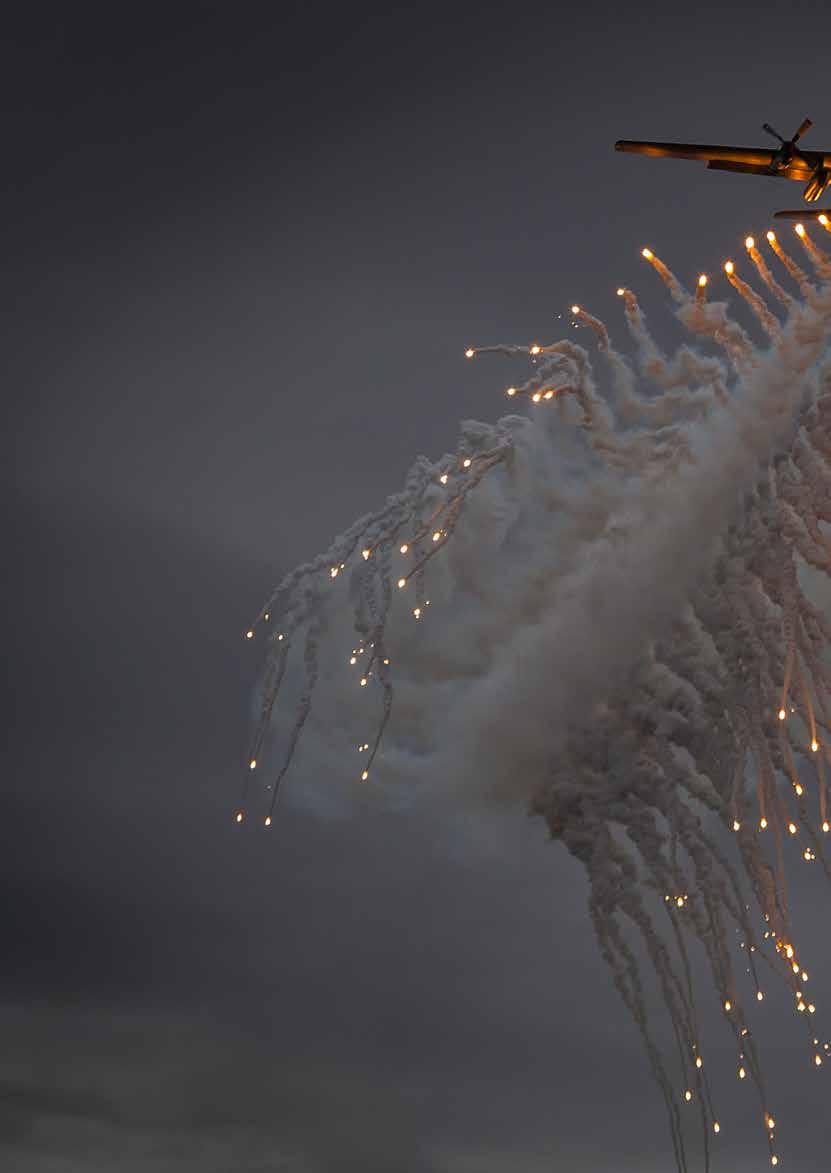
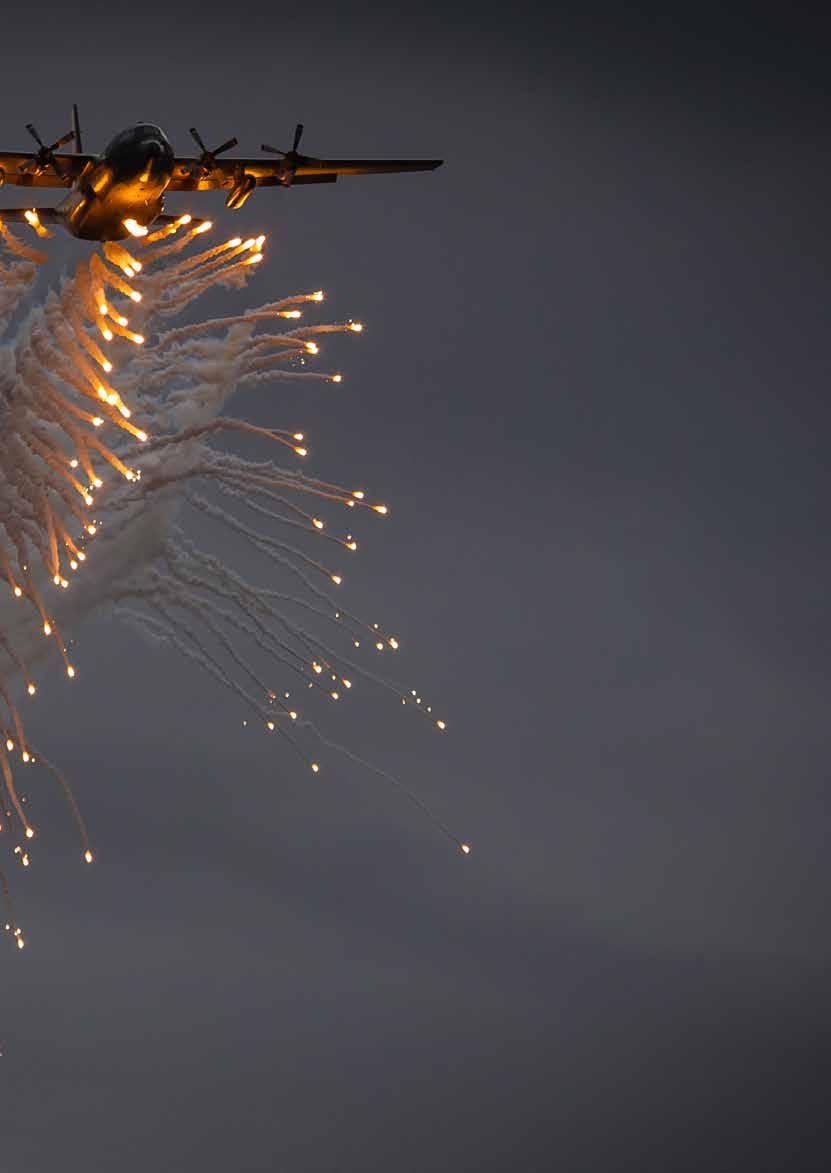
Plan Astra will change our Air Force to meet the rapidly changing world we now face. The security and prosperity of our nation are dependent upon the stability arising from an international rules based system, a free and open IndoPacific, and the benefits that globalisation and technological advances bring us. These factors are no longer assured, and as responsible global citizens we, as a force for New Zealand, need to be prepared to cooperate where we can, compete where we have to, and fight when we must.
“Plan Astra will describe how we as a force will build our resilience, and how we will prioritise our activities to be ready to meet the challenges facing New Zealand now, and into the future.”
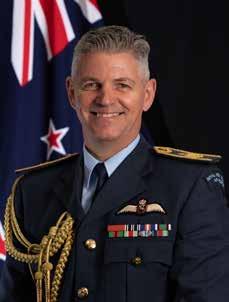
Through Plan Astra we must shape our thinking and take the actions necessary in order to effectively respond to increasingly complex challenges on the horizon. Because those challenges are coming at us fast, we must adapt even faster.
Plan Astra is not about doing more with less; it is about how we prioritise what we do have, with a laser focus on the most important tasks. We need to ensure the Air Force is a combat-capable, deployable and sustainable force that can integrate effectively with partners, is comfortable with mission complexity and is able to deliver kinetic effects.
As an Air Force there is work to do to achieve and maintain this state. We must look closely at how we are currently working in order to better prepare for the deteriorating environment we face. Prioritisation will require us all to be honest, innovative, and focus on what needs to be done. In some cases this will mean putting aside or stopping current activities and work that you or your unit might be deeply invested in.
That prioritised effort will need to consider core training and ensure that those joining our Air Force realise their aspirations of being both well prepared, and getting their hands onto the tools quickly so they can contribute and make a difference. Achieving this will require a careful look at how we enable our training systems, and a shift in how we manage and accept risk; trust and empowerment in the actions and decisions of our aviators being a central tenet.
Plan Astra is intent based and relies on every aviator for success. No matter your rank or trade, military and civilian alike, we all have a part to play.
I’m excited about the challenges and opportunities in front of us and confident in our ability to meet them. In my visits around the bases I have continually been impressed by your attitude, skill and optimism. Whilst there is no certainty what the future might bring, I am confident that Plan Astra will be our go-to document to keep us focussed and I thank you for your contribution in bringing it to life.

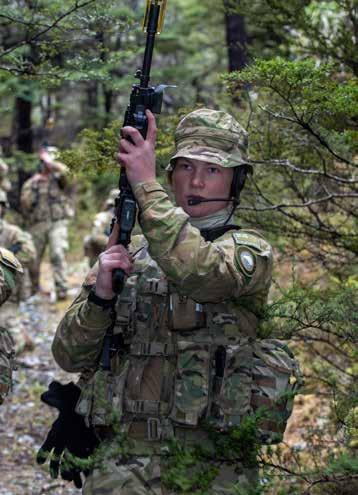

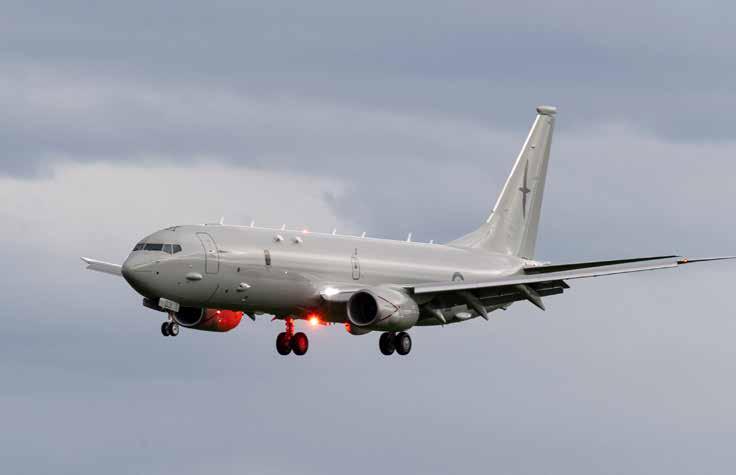
The Air Force has answered a call from the United Kingdom to support its Blue Belt marine conservation programme, deploying a new P-8A Poseidon aircraft to assist with monitoring of the Pitcairn Islands Exclusive Economic Zone (EEZ).
The P-8A crew carried out 10 hours of airborne surveillance, with a total of 24 vessels reported on.
About 5500 kilometres east of New Zealand, the Pitcairn Island EEZ is an 834,000-square-kilometre marine reserve, with all forms of commercial fishing and mining prohibited. A network of remote surveillance sensors provide constant reports of movement in the area.
It is part of the UK’s Blue Belt programme, a marine conservation effort that assists its overseas territories to create and maintain healthy and productive marine ecosystems with the aim of tackling the serious global problems of overfishing, species extinction and climate change.
Air Component Commander Air Commodore Andy Scott said the Air Force was pleased to assist UK partners in the important task of preserving this area.
“The reporting by the P-8A crew on the Pitcairn task meant that the UK Marine Management Office (MMO) was able to confirm accuracy of the remote surveillance methods so they know what they’re seeing is correct.
“The presence of the aircraft also provides a deterrence factor to those who may be seeking to carry out illegal activities in the marine reserve.
“The range of the P-8A means we’re now able to project even further into areas that require monitoring for various reasons. Earlier this year the aircraft carried out the furthest south continuous patrol the Air Force has done, in support of the Convention for the Conservation of Antarctic Marine Living Resources.”
The Pitcairn operation was a joint tasking between the UK MMO, the Government of the Pitcairn Islands, the Joint Maritime Security Centre UK, the National Maritime Coordination Centre (New Zealand), New Zealand’s Ministry of Foreign Affairs and the New Zealand Defence Force.
The Air Force acquired four P-8A Poseidon aircraft last year and they are regularly deployed to provide maritime surveillance throughout the Southern Ocean and South–West Pacific.
A two-week No. 40 Squadron tactical flying exercise by C-130 Hercules crews was undertaken recently in the skies above Bases Auckland and Ohakea.
The exercise, Tacex, gave aircrew the chance to learn and practise tactical flying, a skill used in threat environments to maximise the safety of the aircraft and crew, yet still achieve the mission.
During the first week C-130 crews focussed on the art of flying in a hostile environment. The main objective was to master low-level flying, which involved flying the aircraft at altitudes as close to 250ft as possible along a route thoroughly planned by the crew.
Low-level flying allowed the crew to fly below Weapon Engagement Zones and use terrain to mask the aircraft. This, along with planning unpredictable flight paths, tactical arrivals to airfields and the ability to change the route in flight gave the crews tools to operate in such environments.

The following week saw the crews deploy to Base Ohakea to practise airdrops into Waiouru, in conjunction with an exercise run by the 2nd Combat Service Support Battalion and 5 Movements Company from the NZ Army.
Working closely with the riggers from 5 Movements Company, C-130 crews completed air drops of CDS (Container Delivery System) containers and HE (Heavy Equipment) platforms.
Rather than the normal training loads, 5 Movements rigged some real world loads, including trailers, ammunition and motorbikes for the crew to drop. This gave both Army and Air Force good experience in order to drop a range of items into a threat environment, to maintain the fighting capability of the forces on the ground.
No. 40 Squadron faced many challenges over the two weeks including classic Manawatu weather, national contingency standby and aircraft issues. Due to a skilled maintenance team and some adaptive planning by the flying crews, C-130 Flight was able to achieve all training objectives set out for the exercise. The final flight was to drop a Triple Sequential – three HE platforms leaving the aircraft on the same pass - a drop that not many on No. 40 Squadron can say they have done. A great finish to two weeks of training.
Next up for C-130 Flight is Exercise Skytrain. This will allow crew to put into practice what they have learnt at Tacex, but in a more mission focussed sortie. This will prepare C-130 crews to a high level and have them ready to deploy to hostile environments if needed.

Base Ohakea firefighters recently took advantage of a specialised training area to perfect their skills in extinguishing an aircraft fire. At the same time they may have inspired the next generation of firies to join the trade.


Thirty New Plymouth Boys’ High School students were buzzing after getting close, but not too close, to a “hot” aircraft firefighting exercise held by Base Ohakea firefighters.
The aviation fire training was part of an annual mandatory exercise and assessment at a purpose-built facility in New Plymouth.
Warrant Officer (W/O) Tim Hunt said the exercise and assessment were crucial to supporting air operations at Base Ohakea.
The students saw a simulated hot fire using pressurised fuel on a purposebuilt aircraft, and watched as crews approached the fire and doused flames using high-pressure hoses and fire suppressant sprayed from the monitor on top of an Aviation Rescue Fire Fighting Vehicle (ARFFV).
Dummies were also rescued from inside the burning plane.
Students inspected inside the aircraft after the fire was doused to see for themselves what a firefighter would see, minus the heat and smoke.
Two of them also donned firefighting personal protective equipment (PPE) and experienced what it was like holding a high-pressure hose and all students had a go at lifting and moving a 75kg dummy.
Student Ryan Jamieson, 16, has been in the Air Training Corps for three years and intends to join the Air Force on leaving school. He was “maybe” tempted to train as a firefighter following the exercise.
Teacher Aaron Lock said the students were buzzing after the exercise and really enjoyed watching the “firies” at work.
“Events like today play an important part in helping our young men make a career decision,” he said.
“By being close to the action and able to interact with those doing the demonstration they get a first-hand account of what it takes to walk that career pathway.
“It was truly a genuine experience that will stick in the minds of the young men that attended.”
W/O Hunt said as part of the exercise crews had to extinguish fires on an aircraft wheel, aircraft engine, static pond fuel and an internal fire inside the fuselage.
“Crews were also assessed on their approach to the fire, positioning the ARFFV to ensure they were close enough to apply fire suppression from the roof monitor while remaining at a safe distance.
“They also used the roof monitor as a firefighting tool to protect crews and passengers to evacuate. All scenarios were conducted using pressurised fuel on a simulated aircraft wearing full Level 2 firefighting PPE and Breathing Apparatus.”

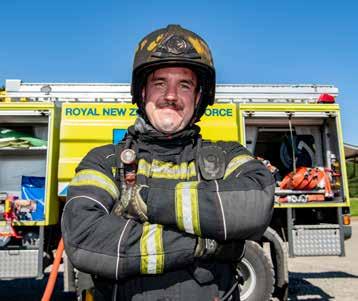

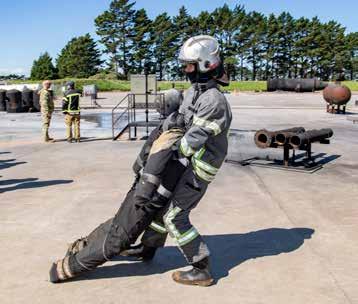
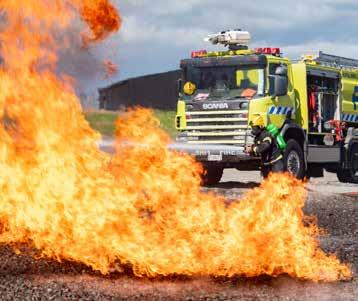
Cope North is an annual field exercise that is designed to improve combat readiness, increase interoperability and develop cooperative operations between multiple nations.

The countries are predominately the United States Air Force (USAF) as sponsors, Royal Australian Air Force (RAAF), and Japanese Air Self Defense Force (JASDF). The main staging area and command element for this year’s exercise was Andersen Air Force Base, Guam and the deployed element was located at Tinian Baker Air Field, Tinian, one of the Northern Mariana Islands.
During each Cope North, Pacific Air Force’s International Affairs division organises the International Observer Programme (IOP) as part of the exercise. This year’s IOP nations included: Nepal, New Zealand, Germany, Indonesia, Malaysia, Mongolia, the Netherlands, the Philippines, Thailand, and the United Kingdom. New Zealand was represented by Squadron Leaders Gus Cabre and Anthony Clegg from Aeromedical Evacuation and Air Mobility respectively.
The IOP is an excellent opportunity for non-participating nations to gain insights into how a large multi-national exercise is run, along with all the challenges and success that go hand-in-hand.
Underpinning Cope North was Agile Combat Employment, which involved interoperability and integration, along a the shift by USAF towards creating Multi-Capable Airmen (MCA). The MCA concept is something our Air Force is essentially already practising in part, due to our smaller size, but larger militaries like USAF are feeling the impact of manning shortages.
We were deployed into theatre on the island of Tinian. Tinian Baker is a disused World War II air field in an overgrown state.
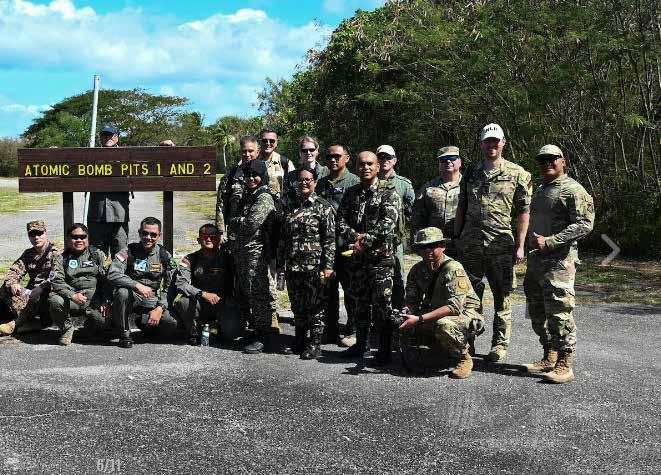
The environmental conditions had personnel operating consistently in temperatures of around 31°C. The contingent itself was to establish as little footprint as possible to enable them to set up or draw down quickly in response to any situation or threat.
As the IOP we were able to interact and receive briefings from elements of the 36th Contingency Response Group security forces, communications and medical teams, including showcasing their equipment.
These were great opportunities to share New Zealand’s perspectives or approaches and they were warmly received. Amongst the buzz of fast jets, we were able to watch a demonstration by the 36th Red Horse unit, who are airfield battle damage repair experts. Within 20 minutes they successfully repaired a crater suitable for fixed wing transport aircraft to land on.
While successful, Cope North was not without its challenges, such as the language differences between the predominately English speaking USAF/ RAAF and the JASDF. This was however overcome with translators attached to each unit. When moving between the various elements the repeating message from all personnel was that logistics and communications were critical combat support systems and caused the most disruption if they weren’t gripped up.
Highlights of the IOP included gaining an appreciation of the sheer scale of military assets used in support of Cope North, the sound of lots of fast jets, engaging with the enthusiastic and capable USAF, RAAF and JASDF personnel, getting to know our fellow IOP members and their home countries, and an unplanned swim with a couple of reef sharks.
As a side note there are some interesting military facts about Guam and Tinian. Sergeant Shoichi Yokoi of the Imperial Japanese Army hid in a cave in the jungles of Guam for 28 years (1944–1972) after the US Marines re-captured Guam in 1944. The two atomic bombs that were dropped by the Enola Gay and Bockscar on Hiroshima and Nagasaki respectively, were stored in pits located on Tinian.


NH90 helicopter crews have been qualifying for ship landings in preparation for a major operation in the Solomon Islands, helping with the nation’s elections. The specialised training equips crews to understand what it’s like to land on a surface that doesn’t usually stay flat.
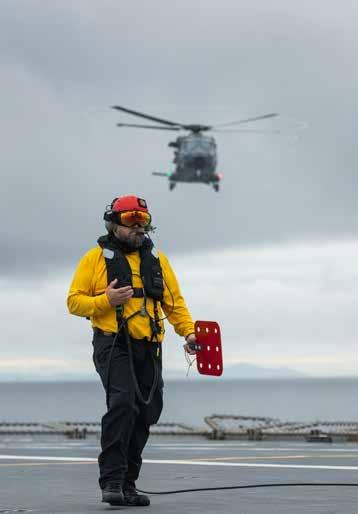
The week-long training took place in Auckland’s Hauraki Gulf on board HMNZS Canterbury, which also needed to have its Sea Acceptance and Readiness Check (SARC), Aviation processes ticked off.
Helicopter loadmaster Warrant Officer (W/O) Gareth Sharp said training included winching onto the flight deck, which had unique challenges.
“Obviously the deck is moving and there are a few extra checks to be done, making sure it’s in a good shoal for the ship – the pitch and roll limits aren’t outand also knowing where the wind is.”
When helicopters have ground landings loadmasters lean out of the aircraft to assess the ground, but for flight deck landings they are secured in seats for safety reasons.

“It’s just a lot slower – we need to approach the side of the ship, see what’s going on, move across, stabilise and then slowly come down onto the deck. Fortunately the Hauraki Gulf was very smooth.
“The ship has certain pitch and roll limits that it has to try to maintain to conduct safe helicopter operations. Outside of those limits we don’t land or take off from the ship, we have to wait until the seas are calmer,” W/O Sharp said.
Communication between air and ground crews with the ship was imperative for the safety of everyone working with the helicopter, he added.
“A challenging aspect was making sure we got the information from the ship that we needed before landing. Once we got the cues and everything lined up, it all fell into place.”
It was beneficial working with the ship’s company, especially as many of the flight deck party hadn’t had much experience operating with the NH90 before, W/O Sharp said.
“But they were really onto it. We had some new equipment that we had to brief them on the use of. We got them to run through using it and they had no issues. They were flexible and adaptable.
“There was also the usual banter between the services, which was great because professionally we know we are there to help each other out. It’s always good to talk with them and find out what’s going on in the Navy because some of us don’t necessarily get to hear about the other services.”
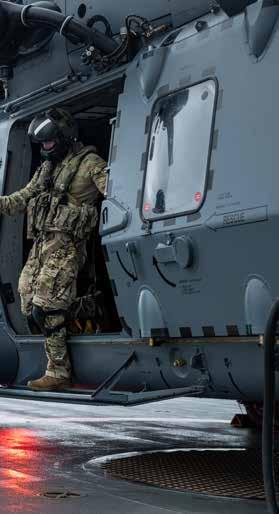
Commanding Officer Canterbury, Commander Bronwyn Heslop, was delighted to achieve the SARC tick from the Maritime Training Group within a couple of days of the training.
“We got the tick Wednesday morning, and that’s pretty fast for a SARC Aviation. The team bonded really quickly. We have a really good relationship with both No. 3 Squadron and No. 6 Squadron with the Seasprites – they are lovely to work with.” She’s had No. 3 Squadron on board three times so far in her time as Captain. In November 2022 the squadron underwent a similar exercise to prepare for the summer cyclone season, and were then embarked in Canterbury in March–April 2023, which involved working alongside Fijian military to train personnel in amphibious operations and humanitarian and disaster relief work.

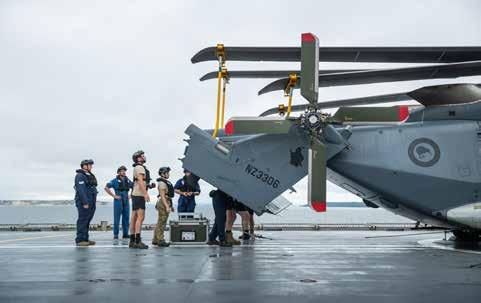
ACHIEVED :
4 pilot qualifications
1 partial pilot qualification
6 pilot re-currencies
6 helicopter loadmaster qualifications
30.7 hours flown

No. 230 Squadron is changing the way it’s delivering services, with the improvements being ushered in at the same time a new Commanding Officer takes the controls.
Wing Commander (WGCDR)
Brent Bryers is excited about his new position and said it is an honour to be appointed the squadron’s commander.
“It is a privilege over and above being selected as a commander. I’m really looking forward to the next few years.
“No. 230 Squadron delivers a huge amount of effect for the organisation and what we do is key to enabling the force elements and other parts of the organisation,” he said.
The squadron delivers two quite different enabling functions – intelligence and communication and information systems (CIS). Recently there has been approval to “realign the two trade structures” to improve how they deliver their services to the Air Force, WGCDR Bryers said.
The Intelligence operations model re-aligns the Intelligence functions and outputs from a solely mission-linked and supporting function to a more empowered, adaptive and problemcentric capability that is fully integrated into our Intelligence and Five Eyes enterprises, he said.
“In terms of the CIS capability, it’s historically been centred around and from buildings and we have pushed our services out from there.
“The change that CIS is going through in the service delivery model is pushing that capability out to the Force Elements and centres around the unit that needs the services, rather than the building where we house the services.”
WGCDR Bryers leans into a Navy analogy comparing his role to that of the captain of a ship, which is already on course and heading for a destination.
“I see my role as keeping the squadron on track and making minor adjustments to our course to ensure that where we end up is the destination we started heading towards a couple of years ago when we started this whole process.”
Starting his career as a communications operator, WGCDR Bryers rose through the ranks to become a senior CIS technician before commissioning as a CIS officer. He has been able to witness the evolution of No. 230 Squadron since its inception.
“When I joined up there was no intelligence function in the Air Force. I’ve been around long enough to be lucky enough to see the start, growth and development of a brand new trade with intelligence.”
No. 230 Squadron today is the result of the amalgamation of the communications functions of No. 209 Squadron (previously Expeditionary Support Squadron) and the Intelligence functions of the Integrated Mission Support Squadron.
The squadron is an integral unit contributing to exercises and operations and partnering with other operational units for tasks and missions. They are called on to work on all manner of deployments, including humanitarian aid and disaster relief missions where they provide communications and intelligence services. It also takes part in exercises designed to hone their skills in a hostile environment. This year the squadron will be taking part in multi-national Australian exercises Pitch Black and Talisman Sabre. Pitch Black features a range of realistic, simulated threats that can be found in a modern battle-space environment and is an opportunity to test and improve force integration, using one of the largest training airspaces in the world.
Talisman Sabre is designed to test the respective forces in planning and conducting combined (multi-national) and joint (multi-service) military operations. Last year’s exercise involved more than 30,000 military personnel from 13 nations.
“We have a really good relationship with the Australians and we send people over there to embed with its military to participate in those activities. Getting people offshore is always something we want to do because that’s why people joined up, so these are some of the opportunities,” WGCDR Bryers said.

“Part of the journey we’re on right now is continuing to evolve as a unit to deliver those effects to the force elements in a much better way than we have before.”
– Wing Commander Brent Bryers
On February 22 hundreds of Defence Force military and civilian staff dropped and did 22 push-ups in support of mental health awareness and starting conversations about the challenges some people are facing.
The 22 Push-Up Challenge originated in the United States military in 2013 as they were struggling to deal with the grim statistic of 22 veterans on average dying by suicide every day. The campaign has since spread throughout a number of militaries around the world that support the challenge.
Wing Commander (WGCDR) Stu Pearce, who spear-headed the event, said there were strong connections between physical exercise and mental health.
“We can get so bogged down in our day jobs that we forget to take time to have proper conversations or reflect on how we are feeling. A lot of us put the uniform on and we become a certain type of person and we do a certain job and that becomes our focus. Every now and then it’s essential that we take a moment to pause and reflect on our mental health.”
The challenge was a great opportunity for Defence Force personnel to come together and have a conversation about how they were feeling and how the people around them were feeling, he said.
“If one of us isn’t performing at the top of our game then everyone is affected. Any less isn’t safe for the individual, it’s not safe for the team and it’s not safe for our mission. Whether we are a military or a family unit, mental health is essential so we are ready to meet whatever challenges come our way.”
WGCDR Pearce was surprised at the number of people who jumped at the opportunity to take part in the event.
“I envisioned about half a dozen of us from Air Staff at headquarters getting involved and that would be about it. But when we saw how many people got behind it, I think it’s a sign people in this organisation care deeply about the military whānau.
“Comradeship isn’t just one of our core values that we put on our branding, it’s a big part of who we are and we genuinely want to care for those around us,” he said.
“We all know somebody who has been affected by poor mental health or has been through some kind of a challenge or we have been through that kind of challenge ourselves. Taking a bit of time out of our day – five minutes to do some press-ups with our buddies, it’s not a lot of time, but it’s enough to have a few conversations and remind ourselves of the support that’s available if needed.”
Work is still needed to be done to remove the stigma surrounding mental health and the military need to ensure that someone dealing with those health challenges did not feel like it would impact their career if they spoke about it, WGCDR Pearce said.
“When people are struggling they go and see an expert. Those conversations are happening behind closed doors and the support they receive is personal, professional and tailored to them. Rightly so, conversations are done in private.
“As a consequence of that we don’t often see that process and we need to demystify that and destigmatise that. People need to have confidence in the system and the framework that exists to provide that support, but also to recognise that rarely do these problems get better on their own but actually, with a little bit of support and help they can be solved quite easily.”
Mental health needed to be treated the same way as any other health issue, he said.
“Push-ups are a nice analogy for life, there are downs and there are ups. Sometimes pushing yourself up can be a little hard and a bit of a struggle, but the important thing it to try and do your best.”


Four personnel from the New Zealand Defence Force Space Program, alongside more than two dozen other nations, attended Exercise Global Sentinel at Vandenberg Space Force Base, California, to advance collaborative efforts in space operations.

Capabilities in the space domain enable military operations and underpin combat effectiveness along with overall mission success. Cooperation with other nations is vital in maintaining awareness of any threats to these space assets and so a network of partner nations is needed for monitoring the domain.
“Ultimately, we are all interested in ensuring space remains safe and secure for future generations to come. By participating in this exercise, New Zealand is demonstrating commitment to working hand-in-hand with our allies toward this common goal,” Space Operations and Development lead Squadron Leader Derek Bezuidenhout said.
The exercise saw more than 200 participants from 25 nations come together to simulate complex scenarios arising from activities in the space domain. Eight Regional Space Operations Centres (RSpOC) were formed; New Zealand’s personnel joined forces with Pacific partners including Australia, Japan, and the Republic of Korea to form the Pacific RSpOC.
Over the course of the exercise, the teams faced a range of simulated events, launches, re-entries, satellite manoeuvres, rendezvous operations, and anti-satellite activities. Individual nations also had the opportunity to lead planning and co-ordination of a mission, with each RSpOC networking to support their mission.
TOP
“Global collaboration on space situation awareness (SSA) is maturing, so for the Defence Force this was an exceptional opportunity not only to learn and build experience, but also to experiment with alternative concepts that will better serve combined SSA operations with our international partners.”
New Zealand Space Operations Centre, with the support of our Pacific partners, took the lead for a mission that involved monitoring replacement of a communications satellite with an adversary satellite in the vicinity.
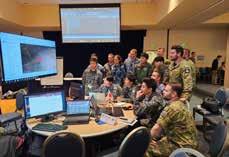
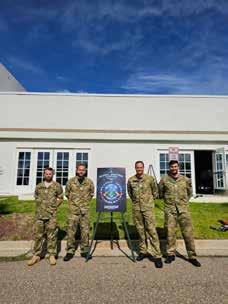
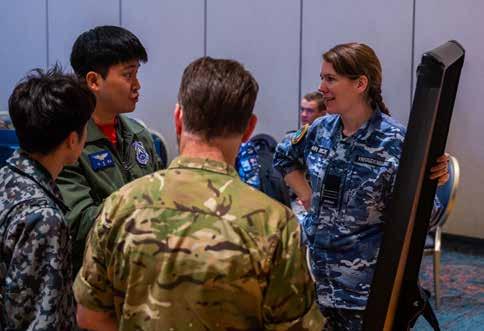
Countries were encouraged to engage with other nations and share ideas, technical expertise, and methods of approaching the more difficult scenarios. Exercise Global Sentinel was also a welltimed opportunity to use the gameplay events as a working group to test and develop processes and frameworks for our own space operations capability development.
One of the Defence Force contingent was deployed to Poland last year for Operation Tieke, providing space domain awareness training to personnel of the Ukrainian Armed Forces. Two of the personnel that Ukraine sent to Exercise Global Sentinel were students during the operation. The exercise was a good opportunity from them to build on the training provided by New Zealand.
“It was good to see the Ukrainian students again. It was interesting to hear about the development of their space capabilities and the effect our training has had in supporting them,” Space Operations Instructor Flight Sergeant David Cresswell said.
Alongside the exercise itself, Defence Force personnel had frequent opportunities to build relationships with participants from other nations and a chance to reconnect with familiar faces.
The social calendar featured a capstone “Spaceball” (football) tournament, tenpin bowling competition and of course the Super Bowl. The teams for Spaceball were made up of a mixture of nations, with each team competing in a round-robin for the Global Sentinel Spaceball trophy.
The exercise coincided with the unforgettable experience of watching two SpaceX Falcon 9 rocket launches from Vandenberg SFB. This was observed close enough to watch it ascend followed shortly by a wall of sound produced by the rocket.
Real-world events such as these are tracked and analysed by Global Sentinel participant nations during the Global Sentinel Real World Events. This is a continuation series that supports missions putting the skills and relationships developed from the exercise floor into effect.

“Global Sentinel also allowed us to talk with many partner nations about the development of their space capabilities, including learning from our friends about how they stood up their own Space Operations Centres.”
– Flight Sergeant Dave Cresswell
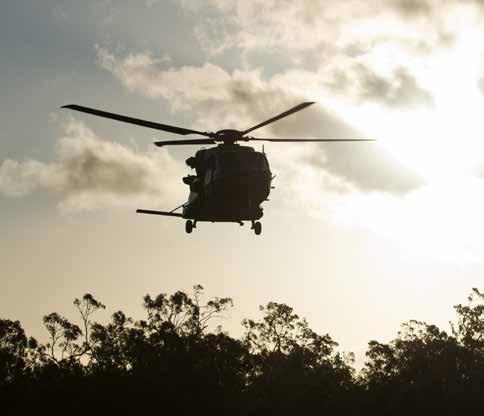
... we’re wheels up, but need to keep the throttle open as we climb towards our DARs cruising altitude ...
Ayear on from crossing the DARs starting line, it’s worth taking a look at the journey to date and seeing what’s changed, what’s still to change, and if the benefits we envisaged are there.
Since adopting the international bestpractice European Military Airworthiness Requirements (EMAR) as our own aviation safety system, we’re already starting to see the anticipated benefits of improved operational outputs, interoperability, best-practice alignment, and high-performance organisations materialise in a number of areas. Some insights into DARs progress over the past 12 months includes recent NH90 proof of concept trials with a Finnish-developed and approved enhancement to the aircraft search and landing light improving operational outputs.
Another is the universal language available through the framework that streamlined development approval recognition and problem-solving to deliver practical and pragmatic outcomes faster.
As the NZDF independent military aviation authority, the Defence Airworthiness Authority (DAA) has been keeping a keen eye on proceedings throughout our DARs journey and it recently undertook its first audit of our DARs Organisations.

It did note several positives including continuous improvement initiatives and heightened personnel awareness/thinking regarding aviation risk and mitigation. Organisations have more control over how they achieve compliance and are identifying ways they can operate more effectively as they become more familiar with the regulations.
Publications have the potential to be easier to update, which will lead to more accurate orders, instructions and procedures. The DAA stressed the need for complete and accurate documentation to improve regulatory compliance, and to focus on understanding DARs and its philosophies to improve organisational performance. While lessons are still being learnt and improvements are to be made, as a first international engagement for the DARs framework things were much easier than had they been undertaken using legacy NZAP 6000 processes.
Our new system is making interoperability simpler and delivering operational outcomes faster.
Late last year the Air Force’s Approved Maintenance Organisation (AMO) stepped into the DARs framework and began working towards implementing continuous improvement and other aspects of high performance organisations.
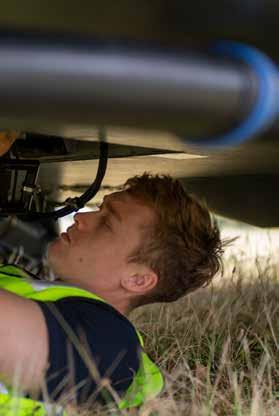
While work is still ongoing in this space, the key DARs philosophies of ownership and performance focus are taking root and starting to bear fruit in trimming procedures to improve operational outputs. This high performance focus is being extended to cover the non-DARs regulated areas and include all facets of the AMO’s workforce.
The heightened awareness of personnel around the intricacies of the new framework and how to start getting the best out of it, including seeing DARs language becoming part of business as usual. The right foundations are in place and there’s plenty of signs indicating that the organisation is growing in the right direction.
Military Airworthiness Review Certificate training delivered last month by our DARs strategic partner Baines Simmons Ltd has seen us getting closer in step with international airworthiness best-practice. Within the DARs, the Military Aircraft Maintenance Licence construct provides a useful benchmark for areas of Air Force technical training to be assessed for interoperability. Analysis of existing training against our needs and the DARs benchmark has identified some minor growth areas needed to improve training outputs and enhance interoperability.
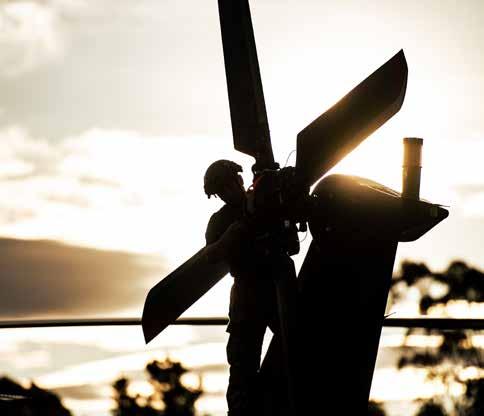
Through the efficiency of being aligned with an international best-practice system, the Air Force has been able to reach out to other EMAR accredited training organisations and purchase the specific training modules needed to enhance our technical training. This enhanced technical training is the first step towards being able to introduce internationally benchmarked qualifications for our technical workforce.
Under the DARs framework the regulated community has more control over its own destiny and are thinking about how to make effective change. The DAA did stress there was still a need for accuracy of documentation and ongoing regulatory compliance, but acknowledged the need to encourage focus on the DARs philosophies of business ownership and performance focus.
Through DARs the Air Force is making significant strides towards the organisational readiness and resilience sought in Plan Astra.
The envisaged programme benefits of improved operational outputs, highperformance organisations, alignment with international best-practice, and improved interoperability can already be seen in the short 12 months since crossing the starting line.
As our understanding and use of this new system matures we will undoubtedly see ourselves soaring towards the DARs cruising level of optimised organisational performance. Over the next year the focus will be to:
• set the conditions for improved interoperability with various partners;
• identify and leverage further opportunities and synergies across DARs framework; and,
• focus on continuous improvement in order to make DARs procedures and other orders, instructions and procedures faster and easier to enhance Air Force operational outputs.
We have come a long way and with the above points we will continue the climb up to cruise altitude.
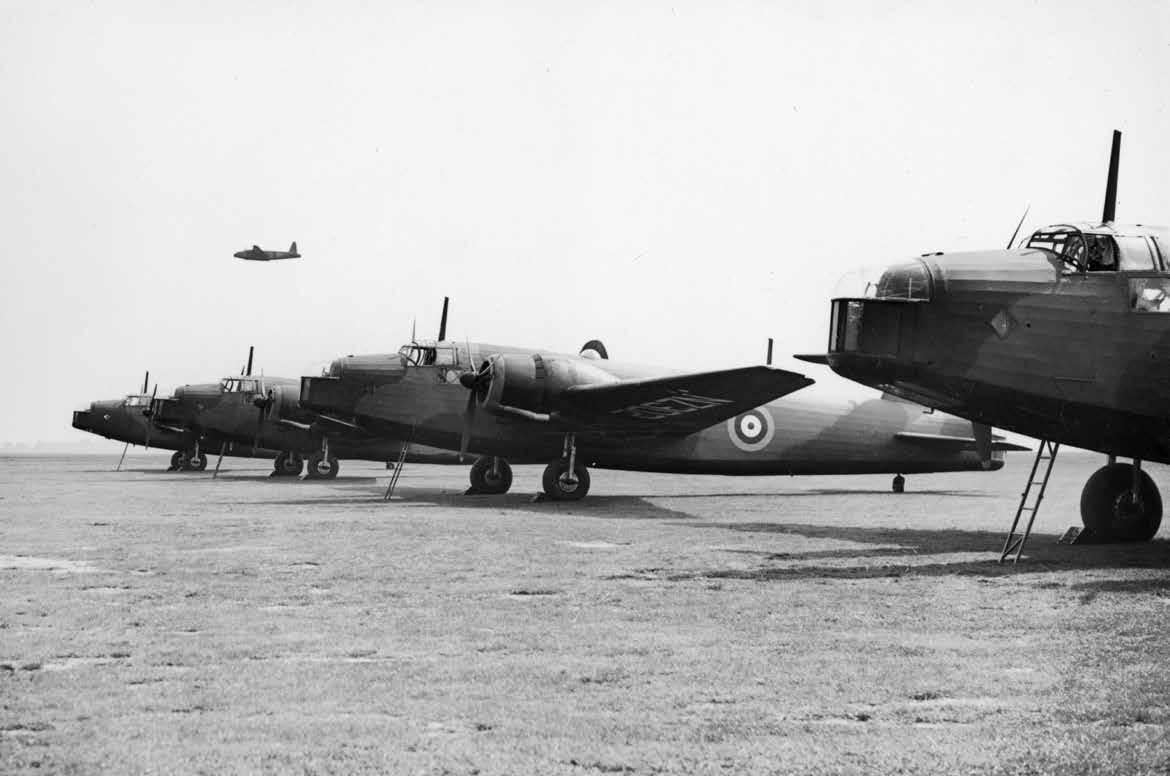
A small piece of Aotearoa New Zealand will soon be winging its way to Canada to commemorate the 7,000 Kiwis who trained with our Commonwealth cousins during World War II.
Akōhatu (rock) from the West Coast has been blessed by kaumatua before heading across the world to mark the centenary of the Royal Canadian Air Force (RCAF). It will form part of a new memorial at the RCAF’s National Military Cemetery at Beechwood, in Ottawa, Ontario.
The kōhatu represents the strong ties between the Air Force and the RCAF, including the Kiwis who travelled to Canada to train as pilots, navigators and air bombers during the war as part of the Empire Air Training Scheme.
It was blessed by Maaka Tau of Te Taumata Tapu o Ngāi Tūāhuriri in front of the Roll of Honour at the Air Force Museum of New Zealand.
Maaka Tau said the karakia was a chance to give thanks to God and to everyone who had a hand in the project.
Museum director Brett Marshall said the Air Force had responded to a call from the Canadians to send over an appropriate treasure to symbolise the incredibly strong connection built over many years between the Commonwealth Air Force partners.
The kōhatu is resting in front of the museum’s Roll of Honour before heading to Canada next month.
“The Roll of Honour lists the names of all New Zealanders who have died whilst serving in our Air Force or serving in other Allied or Commonwealth Air Forces. Within it are the names of all New Zealanders who trained in Canada and never came home. It is therefore fitting that the kōhatu sits in front of the Roll of Honour for a period of time,” Mr Marshall said.
It is hard to comprehend today the huge resources that went into the Air Force during World War II. Numbers peaked in May 1944 at just under 42,000, when the Air Force was operating 22 squadrons in Europe, the Pacific theatre and at home.


Training the pilots, navigators and air bombers who needed to get up to speed to supply all those squadrons was a huge task and New Zealand has Canada to thank for its success in building a modern Air Force in record time.
Following the outbreak of war in 1939, it was decided that personnel from across the Commonwealth would be sent to Canada to be trained to satisfy the training needs of the Royal Air Force.
This was known as the Commonwealth Air Training Plan, part of an overall effort that was called the Empire Air Training Scheme.
Canada was chosen because of its wideopen spaces, easy access to aircraft manufacturing plants and fuel, and it was not too far to ferry the crews to Europe once training was complete. Crews could also train in all types of weather with no threat from enemy raids.
It was an enormous programme, with 231 training sites spread across Canada.
But Kiwis only represented about 5% of the 131,000 Commonwealth airmen trained by the RCAF as part of the plan.
The training scheme prepared Air Force air crew, who went on to fight predominantly in Europe and the Pacific. At the peak of the training between 1942 and 1944, there were between 1,000 and 2,000 Air Force personnel in Canada at any one time.
Canada made a huge impression on the young Kiwis.
Training through a long winter in Manitoba in 1941, Pilot Officer Murray Carncross from Wellington described in a letter how he felt about the training: “I shall always look back on the last three months as one of the happiest periods of my life. And the funny part is that we have had only one leave in seven weeks!’’
Line-up of No. 75 Squadron (No. 1 New Zealand Flight) Wellingtons
Air Force Museum of New Zealand/TO Freeman collection
TOP MIDDLE
(L-R) Brett Marshall, Tawhai Kimura, Mere Wallace, Tira-Roa Reuben, Liz Kereru, Maaka Tau, Hutika Crofts and Tane Lilley with the kōhatu in front of the Roll of Honour
BOTTOM MIDDLE
Aerial view of snow covered Technical Training School, St Thomas, Ontario, Canada
BELOW
Murray Carncross

Sadly, a little less than a year later Murray Carncross was among the five crew of a No. 75 (NZ) Squadron Wellington bomber who were killed when it was shot down in a raid over Hamburg, Germany. He was only 19 years old and flying on his fifth operation.
After the invasion of Europe in 1944 the numbers being trained in Canada gradually reduced as demand fell.
President Franklin Roosevelt described Canada as “the aerodrome of democracy’’ for its part in the war effort. The scheme’s legacy was felt long into peace time as Canada-trained crews continued in aviation and its economy benefited from new and improved airfields and associated infrastructure across Canada.
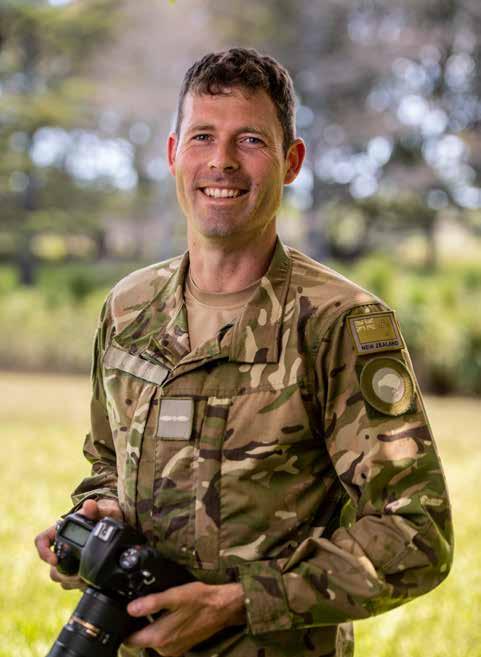
Andrew Jenkins is the Defence Force’s newest Air Force photographer after a varied career as a cook for rich-listers aboard their yachts in the Mediterranean following a stint as an Army combat engineer.
Leading Aircraftman (LAC) Jenkins’ earlier career as a cook was where the seed was planted for him to return to uniform as a military photographer. His photography hobby developed in places like the Amalfi coast and Corsica, and it’s been a love affair ever since.
The idea of becoming an Air Force photographer has always been in the back of his mind. As a combat engineer he often saw them on exercises and thought it was a pretty awesome job.
After four years he left the Army and started crewing on luxury yachts, first as a deckhand and working his way up. He says it sounds glamorous but it is a very competitive industry for first-timers and you have to work hard.
“You can go to the ports and walk from ship to ship, handing out your CV. But I managed to get a job through the online yachting pages. I started as a deckhand, doing a little bit of cooking, and eventually I was cooking full-time.”
His mother is a chef and he had spent a year working in kitchens prior to joining the Army.
He worked on boats on and off for three years in Europe, during the summer seasons.
“All the boats I worked on were about 90 to 100 feet, which is quite small in the realm of superyachts. You don’t go out in the ocean, you tend to cruise around where they are based, like the French Rivera or the Italian coast. There’s only a crew of about four.”
It is tough work, he says.
“It’s pretty demanding for all the crew on board, 10–15 hour days being fairly standard. And as the sole chef on board, if you’re not working, people don’t eat. There’s no room for an assistant. Days off are few and far between while the guests are on board but everyone helps each other out to get through the season.”
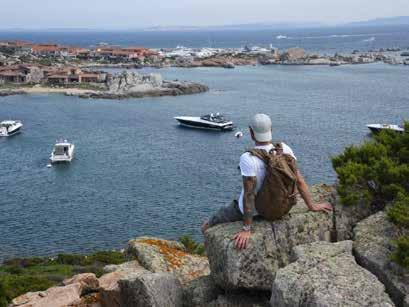

The style of food and service varies from boat to boat but can be anything from a family style barbeque to multi-course fine dining depending on what the guests fancy on the day.
The plus side is the location.
“You are in beautiful places, right there in Europe. You see a lot of stuff people don’t get to see. There’s a lot of travel, with fantastic trips around the coastlines. You go to these exotic places and you find all these amazing ingredients to work with that can be quite hard to source at home. You get a lot of creative freedom with the menu. But that comes with its challenges. You could have a menu and provisions list planned out, and you go ashore to find this tiny little equivalent to a corner dairy with minimal supplies meaning you may have to rewrite the menu on the fly.”
On one yacht the captain had been a professional photographer. “He said, why don’t you get a proper camera? We picked one out. I took some bad photos, then started taking better ones.”

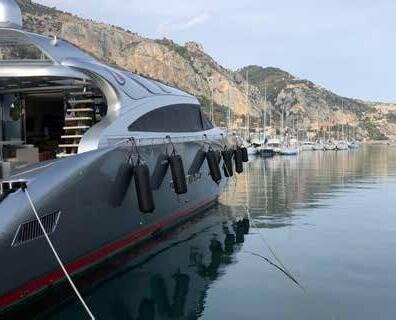
When he returned to New Zealand he decided – with an Air Force photographer role in mind – to “make a thing of this”. He studied photography at UCOL (Universal College of Learning) in Palmerston North for two years, obtaining his Level 6 Diploma in Photography.
He applied for a photographer’s position and re-enlisted, this time in the Air Force. He’s been working for Defence Public Affairs since November.
Military photographers in the New Zealand Defence Force go on operational deployments to places like Afghanistan and Antarctica, documenting Defence Force activity. They travel in military aircraft and ships and closer to home will capture military ceremonies and major events, as well as undertaking studio photography tasks.
“I’m really enjoying it,” he says. “It’s quite unique to be a photographer on a salary. I get a wide variety of tasks and every week is different, and that’s what makes the job so attractive.”
“You get to go away and take photographs of cool stuff. That was my plan from the beginning, back when I was in the Army and saw the photographers doing their thing. I’ve worked towards this and it’s fantastic how it’s all worked out.”
– Leading Aircraftman Andy Jenkins

The Civil Aviation Authority (CAA) has joined forces with aviation leaders to raise awareness of the need to increase safety at unattended aerodromes, as part of their Work Together, Stay Apart safety campaign.
AStatement of Commitment to Work Together, Stay Apart has been launched by CAA to demonstrate the collective dedication within the aviation sector to working together and staying apart, to reduce the likelihood of mid-air accidents and the number of near collision and air proximity events within the circuit at unattended aerodromes – where there is no control tower or one where the tower is not in operation.
All participants, whether organisations, groups, or individuals, that operate at and from uncontrolled aerodromes, and those who influence those operations, are invited to sign.
Air Component Commander Air Commodore Andy Scott said the Air Force welcomed the initiative and was always a proud supporter of CAA safety campaigns.
“The work of the CAA to identify key safety risks and to put together comprehensive safety programmes that bring together all parts of the aviation community is outstanding.
“Uncontrolled aerodromes by their definition lack the air traffic controller oversight and therefore require clear procedures, high degrees of pilot co-ordination and situational awareness to avoid aircraft or other airspace users compromising safety margins,” he said.
“These initiatives that raise awareness are therefore a crucial mitigation against the risks that a lapse in these aspects may result in.”
Deputy Chief Executive Aviation Safety David Harrison acknowledged the positive response from the aviation sector since the start of the safety campaign in June last year.
Air Commodore
Andy Scott, Civil Aviation director Keith Manch, Air New Zealand Chief Operational Integrity and Safety officer David Morgan, Deputy Chief Executive of Aviation Safety David Harrison
“We’ve been really encouraged by the level of participation in the campaign so far and this is an opportunity for everyone to show their dedication to safety publicly.”
Director of Civil Aviation Keith Manch called on individuals and organisations to lead by example in signing the Statement of Commitment.
“Safety in aviation is everyone’s responsibility and we’re all accountable for playing our part in achieving this – no one is exempt from risk, no matter how experienced, or whether their operations are recreational or professional.”
The Statement of Commitment has been signed by representatives on behalf of Aviation New Zealand, Flying New Zealand, the Royal New Zealand Air Force, Air New Zealand, New Zealand Air Line Pilots’ Association, Gliding New Zealand, Massey School of Aviation, the International Aviation Academy of New Zealand, The Recreational Aircraft Association of New Zealand, the Aircraft Owners and Pilots Association of New Zealand, and Christchurch Helicopters.
A reunion for past and current serving Communications staff is to be held in Palmerston North and Base Ohakea on September 25 and 26, 2024.
Those of you who served pre-2003 in the former RNZAF Telecommunications Branch trade musterings of Telephone Operator, Comm Asst, Teleg, COM OPR/TC/STC OPR, or post-2003 as CISMECH or CISTECH in the Communication and Information Systems (CIS) trade are invited to request event and registration information.
Send an email to Q85988@gmail.com with ‘Please send me Information’ in the subject line.

Two C-130 Hercules and a Boeing 757 conduct low altitude formation flying practice over Base Auckland in preparation for the Warbirds over Wanaka air show. To capture this shot
I positioned myself on the far side of the airfield at the base and waited for the formation to arrive and begin their practice.
I had a few different pieces of kit with me to capture a variety of different images and angles, but for this photograph I waited until the formation was almost directly overhead and used a telephoto lens to have the aircraft filling the frame.
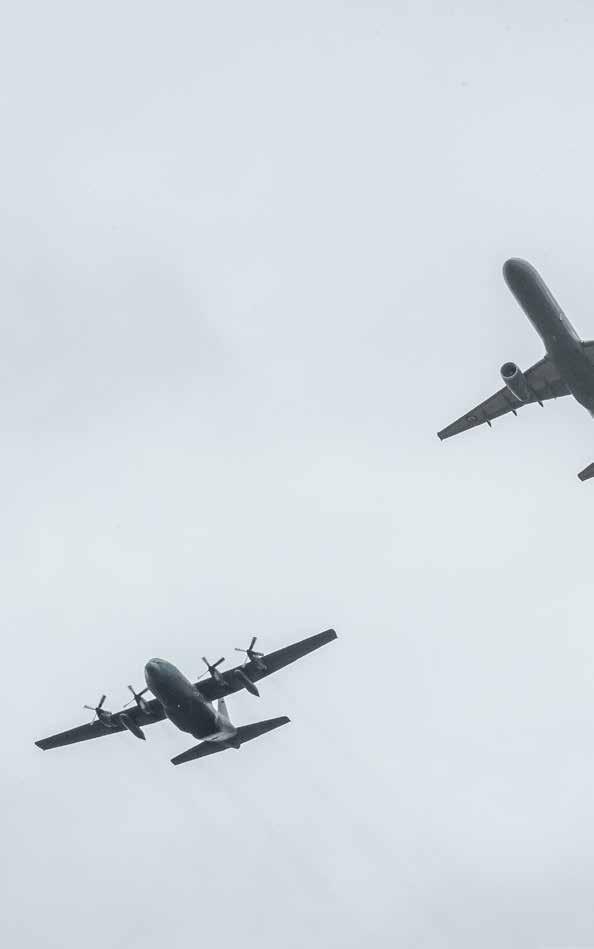
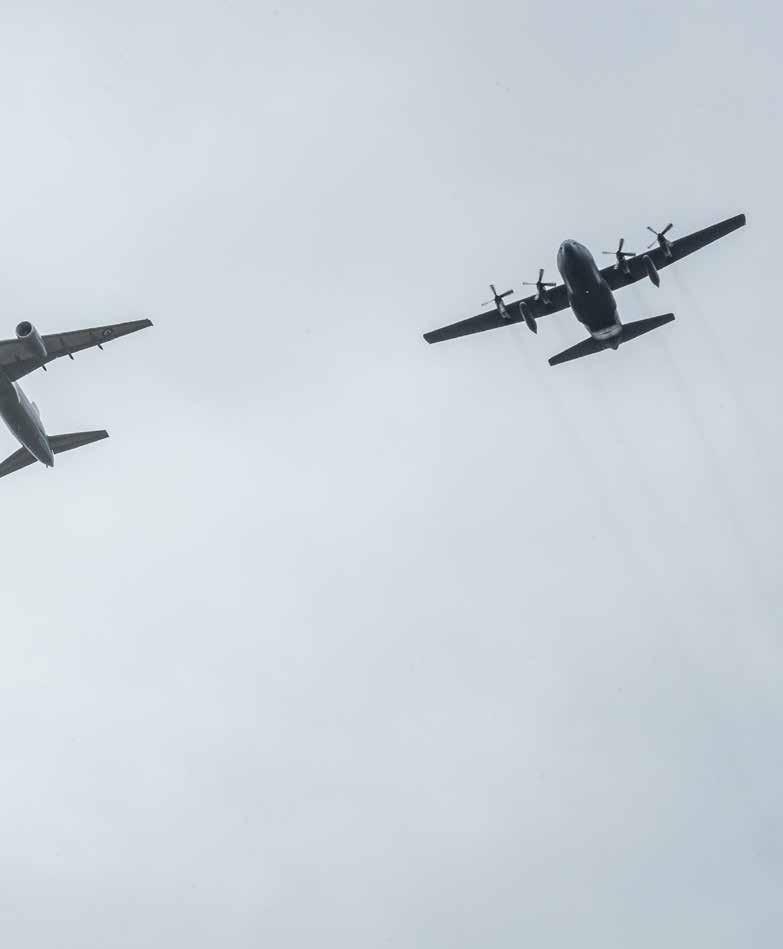
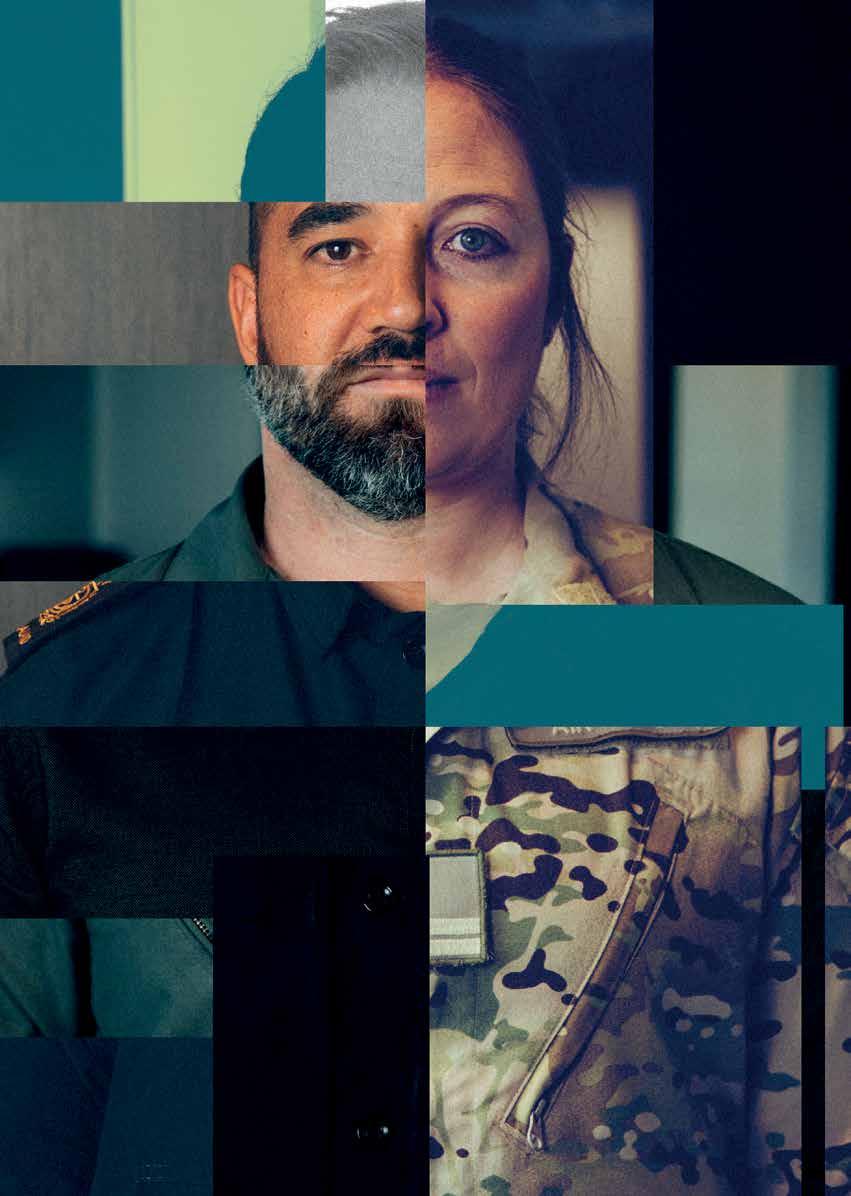
Every day, members of the New Zealand Defence Force achieve extraordinary things.
Listen to season two of Unclassified, wherever you get your podcasts.
